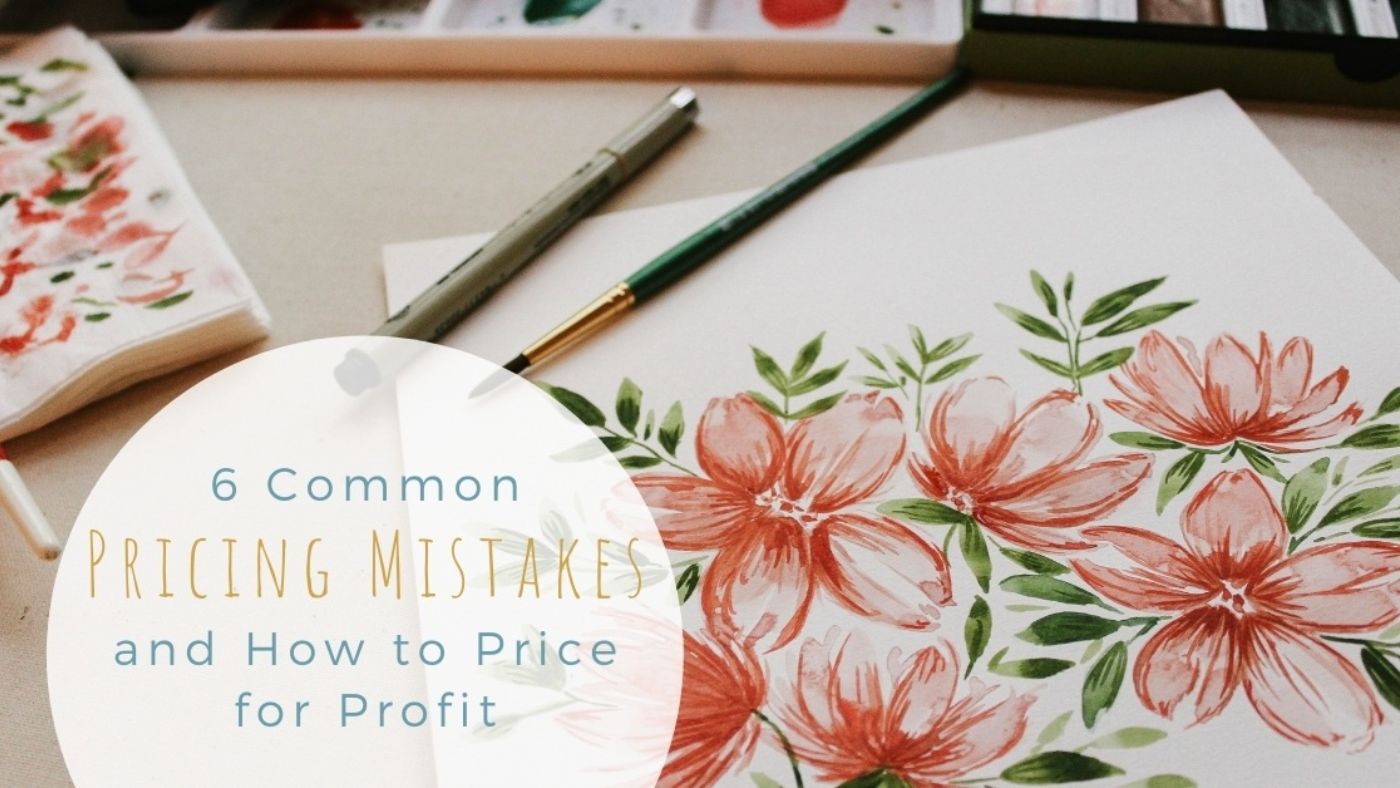
This might surprise you. I have worked with literally hundreds of women in business and less than 1% overprice. You might assume that equates to 99% getting their price right but once again, nope. 1% overpriced, 5% get their pricing right and the rest underprice.
That equates to the vast majority. Why do the majority of women charge too little? So many reasons! Here are just a few...
1) You assume your target market is price driven
If I had a dollar for every person who has claimed "my target market can't afford to pay more" I would have more than enough for a trip to Bora Bora. Everyone assumes their customers are buying based on price but it simply isn't true. There are many steps in the buying decision and price is just one. If customers are constantly complaining about pricing you have attracted the wrong customers. Case closed.
2) To compete against the big guys
The big guys have a very different target market to you. Their market values low prices and mass production over handcrafted and higher quality. You can't compete with them and if you get your marketing right you won't need to.

3) You asked the wrong people
One of my top ten pet peeves in business is women who ask "how much would you pay for this?". Asking friends and family is bad. Asking random strangers in Facebook groups is madness. When you ask that question you're often asking people who aren't your target market, have no immediate need for your product and haven't fallen in love with your brand. Don't outsource your pricing. Ever.
4) You have tied your self-worth to your product
Your product and your self-worth are two different entities. Tying them together in business is a recipe for disaster. Pricing your product is a mathematical equation and has nothing to do with how you value yourself and your work.

5) You don't understand your business financials
One of the biggest bits of feedback I get when women take the time to understand their financials is "oh my, gosh I had made it so much more complicated in my head". Don't avoid understanding the financial side of your business because you think it is complicated or you're happy to leave it to the bookkeeper and/or accountant.
YOU need to understand the basics or you will forever struggle to make money. How much it costs to run your business has a bearing on how you choose to price your products.
6) You followed competitors
Yes, you should be aware of your competitor's prices. It is a good benchmark for comparing your pricing but don't assume they have any clue what they're doing. I have worked with multi-million-dollar businesses that had terrible pricing strategies.
We all think everyone else knows what they're doing and when competitors on Instagram say they have "sold out" we believe them. Instagram followers don't equate to sales, not every post is true and most women are confused about pricing.
Following competitors is often the blind leading the blind.

HOW TO PRICE YOUR PRODUCTS - THE SIMPLE MATHS
1) Decide what your future plans are
If you want to eventually wholesale your product (to retail stores) you need to plan for that well in advance. It will affect how you price your product. If you eventually want to hire someone or outsource production that will also impact your pricing strategy.
2) Write down the costs to create your product
Get a pen and paper and all of your receipts and invoices and write down every single element that goes into to making your product including swing tags, packaging etc. If you're spreadsheet savvy then start there. *The costs of the components to make your product are called "Cost of Goods" or "Cost of Sales".
These are not expenses, we cover those soon!
3) Figure out your time investment
If you're going to grow there is a good chance you will quickly reach a ceiling where you physically can't create more product. For this reason, you need to know and understand what it costs in terms of labour to create your product so you can factor in hiring someone or outsourcing in the future. Know exactly how long it takes to create your product and attach and hourly rate.

4) Know the expenses your business has
Every business has expenses and once again 90% of the businesses I work with drastically underestimate this number. Expenses exist in your business regardless of if you make a sale or not, they're not directly related to creating your product.
Costs like electricity, phone, internet, website hosting, ad costs etc are all expenses. It is important you know what your monthly and annual expenses are. Your product sales need to cover these ongoing costs!
5) Have a goal and track results
Having a sales goal each month will help you see how close you are to being profitable and paying yourself. You also need to track your results each month to see what is really happening in your business.
How many sales did you make?
What were your expenses?
Let me give you a quick example; If you make a product that you sell for $100 but it costs $50 to make the product you make $50 in GROSS profit. If you sell 20 items at $100 your sales are $2000 but your gross profit is only $1000. If you have monthly expenses of $250 you will have a NET profit of $750 ($100 in gross profit - $250 in expenses). Sales =$2000 Cost of Goods =$1000 Gross Profit (sales - cost of goods) = $1000 Expenses =$250 Net Profit (gross profit - expenses) =$750 You get to keep the $750 (you do have to pay income tax on that amount too).
Many product makers see the $2000 in sales and feel like they should have more money in their kitty but can't figure out where it all goes. This shows exactly how it breaks down.

A final word on pricing... Customer will assume your price reflects your quality so underpricing can actually kill your business.
I have worked with clients where we double and tripled pricing and sales skyrocketed because the price matched the customer's expectations of what a quality product should cost.
Don't underprice and don't ignore your business finances! Getting on top of those two aspects will set you up for profit in the future. Want to figure out if you have your pricing right? Download the Pricing Checklist here.
Words by:

Founder of The Profit Lovers, Business Strategist,








